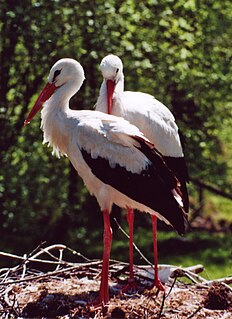
The wildlife of Libya is spread over the Mediterranean coastline and encompasses large areas of the Saharan desert. The protection of wildlife is provided through appropriate legislation in seven national parks, five reserves, 24 protected areas, two wetlands under Ramsar Convention, and also in other areas. Apart from these, there are also five UNESCO World Heritage Sites related to culture. The most important national parks are the El-Kouf National Park and Karabolli National Park. The well known nature reserves are the Benghazi Reserve and the Zellaf Reserve. The wildlife species recorded in the country are 87 mammals and 338 species of birds.
Protected areas of Libya include any geographical area protected for a specific use.

El Kouf National Park, established in 1975, is one of the seven national parks of Libya. El Kouf is located along Libya's northeastern Mediterranean coastline and has both marine and terrestrial biodiversity. Libya also has five other reserves, twenty four protected areas and two wetlands, Ain Elshakika Wetland and Ain Elzarga Wetland, protected under the Ramsar Convention since 2000.
Ain Zayanah is a protected area of Libya. It has an area of 500 hectares, and covers the Ayn Zayanah lagoon and a portion of the coast 15 km northeast of Benghazi. It is a component of the Benghazi Nature Reserve.
Ajdabiya Marsh is a protected area of Libya.
The Al Jaghbub Oasis is a protected area in northeastern Libya lying close to the border with Egypt. It adjoins the desert village of Jaghbub which is inhabited by Berbers with a population of about 400.
Berjuj Valley is a protected area of Libya.
Bombe gulf is a protected area of Libya.
Fezzan valleys is a protected area of Libya.
Grotto de Lete is a protected area of Libya.
Harouj Mountain, also Gebel-Harouj or the Black Harouj Mountains, is a mountain and protected area of Libya.
Nefhusa is a protected area of Libya.
Oasis of Ghat is a protected area of Libya.
Qaminis and Tukrah salines is a protected area of Libya.
Rajma plantations is a protected area of Libya.
Sebkha el Sahel is a protected area of Libya.
Shahaat is a protected area of Libya.
Taizerbo is a proposed protected area of Libya. According to data of the World Database on Protected Areas (WDPA) published by the United Nations this small protected area has not yet been established in 2014. The name Taizerbo is an alternative spelling of Tazirbu.
Taoulga islands is a protected area of Libya.
Wadi Kham is a protected area of Libya.

